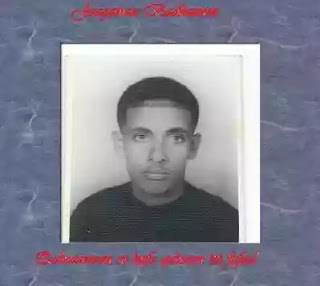........Kan itti fufe............
=================================
3. Walcaalchiisuu:- Aadaa Oromoo keessatti
yeroo hedduu ijoollee dubaraarra dhiira
caalsifachuun ni calaqqisa. Yommuu dubartiin
tokko dhiira deessuufi dubara deessullee
gammachuun namonni mul’isan walqixa miti
(amma amma jijjiramoonni jiraatan illee).
Yommuu weedduu da’umsaa weeddisan illee
akkan armaan gadiitti dhiira caalchisuun
weeddisu turan.
Awwaaree jalli awwaara’ee,
Abdiisaa situ ayyaana’e,
Kan mutaan lilma sii ta’e,
Kan mucaan ilma sii ta’e.
Jechaa abbaa mucaatiif gammachuusaanii ibsu.
Yommuu dubarrii dhalatte garuu baga
ayyaanoofte hinjedhan.
Kana malees dubarrii heerumtee kan ormaa taati,
dhiirimmoo yoo fudheellee qe’ee warrasaatti hafa
jedhanii waan amananiifis akkana jedhu:-
Haadha farsoo naqxee,
Ilka maa hin naqanne,
Ilki cabee badaa,
Ilma lafee namaa,
Isatu namatti hafaa.
Eegaan dubarri Oromoo walcaalchisa kana waan
beekaniif akka armaan gadiitti mararoosaanii
dhaammatu.
A) Guduruu sirbuu gemboo daaddisuu,
Nuun duruu jibbuu obboo caalchiisuu
Obboon garaadha nutii halagaadha,
Obboon kan isaanii nummoo maal saanii?
B) Hindaaqqoon dhaltee qooxii jalattoo
Obbolee dhiiroo
Nan suuqqattanii kootii jalattoo
Kootiin kan keetii ani maal keetii? Jechuudhaan
dhalootumarraa kaasanii ishee akka lagaatti akka
ilaalaniifi obboleeshaa warra dhiiraa ofitti akka
aansaa turan dubbatti. Kana malees obbolaan
dhiiraas isheef osoo ho’uu dhiisanii heerumaaf
dabarsanii kennuusaaniif ni komatti.
********************Galatoomaa************************
=================================
3. Walcaalchiisuu:- Aadaa Oromoo keessatti
yeroo hedduu ijoollee dubaraarra dhiira
caalsifachuun ni calaqqisa. Yommuu dubartiin
tokko dhiira deessuufi dubara deessullee
gammachuun namonni mul’isan walqixa miti
(amma amma jijjiramoonni jiraatan illee).
Yommuu weedduu da’umsaa weeddisan illee
akkan armaan gadiitti dhiira caalchisuun
weeddisu turan.
Awwaaree jalli awwaara’ee,
Abdiisaa situ ayyaana’e,
Kan mutaan lilma sii ta’e,
Kan mucaan ilma sii ta’e.
Jechaa abbaa mucaatiif gammachuusaanii ibsu.
Yommuu dubarrii dhalatte garuu baga
ayyaanoofte hinjedhan.
Kana malees dubarrii heerumtee kan ormaa taati,
dhiirimmoo yoo fudheellee qe’ee warrasaatti hafa
jedhanii waan amananiifis akkana jedhu:-
Haadha farsoo naqxee,
Ilka maa hin naqanne,
Ilki cabee badaa,
Ilma lafee namaa,
Isatu namatti hafaa.
Eegaan dubarri Oromoo walcaalchisa kana waan
beekaniif akka armaan gadiitti mararoosaanii
dhaammatu.
A) Guduruu sirbuu gemboo daaddisuu,
Nuun duruu jibbuu obboo caalchiisuu
Obboon garaadha nutii halagaadha,
Obboon kan isaanii nummoo maal saanii?
B) Hindaaqqoon dhaltee qooxii jalattoo
Obbolee dhiiroo
Nan suuqqattanii kootii jalattoo
Kootiin kan keetii ani maal keetii? Jechuudhaan
dhalootumarraa kaasanii ishee akka lagaatti akka
ilaalaniifi obboleeshaa warra dhiiraa ofitti akka
aansaa turan dubbatti. Kana malees obbolaan
dhiiraas isheef osoo ho’uu dhiisanii heerumaaf
dabarsanii kennuusaaniif ni komatti.
********************Galatoomaa************************







